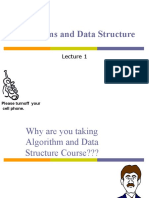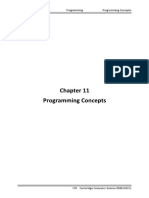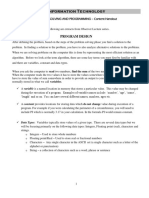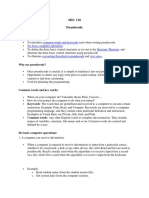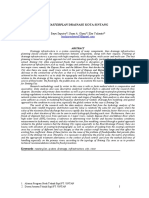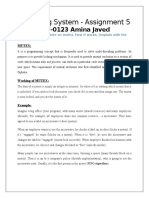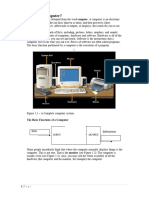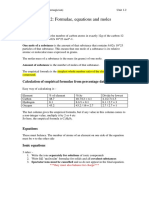0% found this document useful (0 votes)
82 views55 pages3 Fundamental Programming
The document discusses an assignment to create a program that calculates lawn mowing time. It involves reading the length and width of a house block and house from the user, calculating the grass area around the house, and determining the mowing time based on a rate of 2 square meters per minute. The document provides sample pseudocode and discusses key programming concepts like variables, constants, data types, and control structures needed to design the algorithm.
Uploaded by
Rizky OktaCopyright
© © All Rights Reserved
We take content rights seriously. If you suspect this is your content, claim it here.
Available Formats
Download as PPT, PDF, TXT or read online on Scribd
0% found this document useful (0 votes)
82 views55 pages3 Fundamental Programming
The document discusses an assignment to create a program that calculates lawn mowing time. It involves reading the length and width of a house block and house from the user, calculating the grass area around the house, and determining the mowing time based on a rate of 2 square meters per minute. The document provides sample pseudocode and discusses key programming concepts like variables, constants, data types, and control structures needed to design the algorithm.
Uploaded by
Rizky OktaCopyright
© © All Rights Reserved
We take content rights seriously. If you suspect this is your content, claim it here.
Available Formats
Download as PPT, PDF, TXT or read online on Scribd
/ 55



